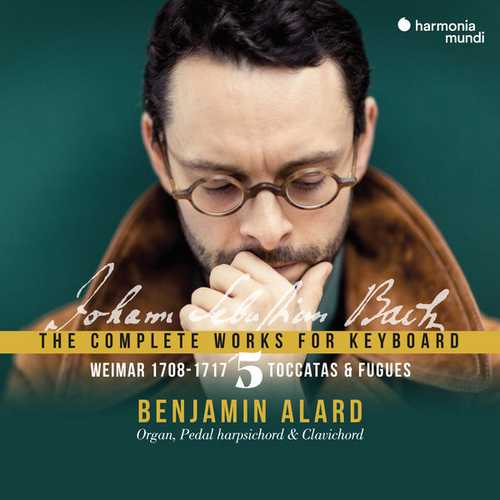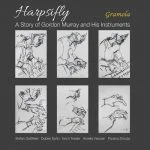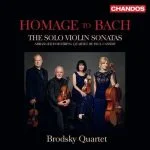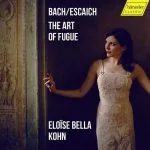

Composer: Johann Sebastian Bach
Performer: Benjamin Alard
Number of Discs: 3
Format: FLAC (tracks)
Label: Harmonia Mundi
Catalogue: HMM90246365
Release: 2021
Size: 3.59 GB
Recovery: +3%
Scan: yes
CD 01
01. Toccata in D minor (BWV 565)
02. Fantasia super ‘Wo Gott der Herr nicht bei uns hält’, BWV1128
03. Chorale Prelude BWV731 ‘Liebster Jesu, wir sind hier’
04. Chorale Prelude BWV730 ‘Liebster Jesu, wir sind hier’
05. Prelude & Fugue in C major, BWV545a
06. Fantasia super ‘Jesu, meine Freude’, BWV713
07. Chorale Prelude BWV747 ‘Christus, der uns selig macht’
08. Chorale Prelude BWV727 ‘Herzlich tut mich verlangen’
09. Chorale Prelude BWV706 ‘Liebster Jesu, wir sind hier’
10. Prelude & Fugue in A minor, BWV543
11. Fantasia super ‘Christ lag in Todesbanden’, BWV695
12. Trio, BWV528A
13. Toccata & Fugue in F major, BWV540
CD 02
01. Toccata in C minor, BWV911
02. Prelude & Fugue in A major, BWV536
03. Fantasia & Fugue in A minor, BWV904
04. Toccata in F sharp minor, BWV910
05. Chorale Partita BWV768 ‘Sei gegrusset, Jesu gütig’
06. Toccata & Fugue in D minor, BWV538 ‘Dorian’
CD 03
01. Toccata in G major, BWV916
Keyboard Concerto in G minor (after Telemann), BWV985
02. I. Allegro
03. II. Adagio
04. III. Allegro
05. Chorale Prelude BWV659 ‘Nun komm, der Heiden Heiland’
06. Fughetta ‘Vom Himmel hoch, da komm ich her’, BWV701
07. Fughetta ‘Gelobet seist du, Jesu Christ’, BWV697
08. Fughetta ‘Das Jesulein soll doch mein Trost’, BWV702
09. Fughetta ‘Gottes Sohn ist kommen’, BWV703
10. Fughetta ‘Lob sei dem allmächtigen Gott’, BWV704
11. Fughetta ‘Christum wir sollen loben schon’, BWV696
12. Fughetta ‘Herr Jesu Christ, der ein’ge Gottes-Sohn’, BWV 698
Keyboard Concerto in B flat major (after Ernst), BWV 982
13. I. Allegro
14. II. Adagio – Allegro
15. III. Allegro
Keyboard Concerto in D minor (after Ernst), BWV 987
16. I. Adagio – Presto – Adagio – Presto – Grave
17. II. Un poco allegro
18. III. Adagio
19. IV. Vivace
20. Chorale Prelude BWV722 ‘Gelobet seist du, Jesu Christ’
21. Chorale Prelude BWV732 ‘Lobt Gott, ihr Christen, allzugleich’
22. Chorale Prelude BWV729 ‘In dulci jubilo’
23. Chorale Prelude BWV738 ‘Vom Himmel hoch, da komm ich her’
24. Prelude & Fugue in A minor, BWV895
Keyboard Concerto in C minor (after Marcello), BWV981
25. I. Adagio
26. II. Vivace
27. III. Adagio
28. IV. Prestissimo
With Volume 5, Benjamin Alard closes the trilogy dedicated to the Weimar period.
Here we reach the toccatas, preludes, fantasies and fugues that show the extent to which Bach now mastered French and Italian influences, only to emancipate himself from them and compose in complete freedom.
An unexpected instrument makes its first appearance in this complete recording played on the finest historical keyboards: the clavichord, perfectly at home alongside the organ and the harpsichord.
The scale and detail of Benjamin Alard’s project to record all of Bach’s keyboard music only becomes more apparent as the series progresses. For a quick reminder, he’s grouping works not by genre but by chronology, meaning that any given volume represents a huge breadth of style. Also of instrument types and timbres, because as painstaking as the actual programming has been his matching of repertoire to an array of beautiful instruments, often thinking well outside the usual box.
Volume 5 sits at the end of Bach’s youthful Weimar period, just before the action moves to the Cöthen, and those for whom Alard’s choices of keyboard have proved to be an especial source of fascination will want to know that this is the first volume for which Alard has introduced a clavichord to the mix – the only forerunner of the piano that was capable of producing dynamic variation by weight of touch alone. His chosen instrument is the Philharmonie de Paris’s silvery Émile Jobin clavichord (1998) after Christian Gottfried Friederici Gera (1773), and the soft, expressive intimacy it brings to Bach’s concerto transcriptions, such as the Concerto in G minor BWV 985 after a Telemann violin concerto, is very beguiling. As is the singing, dainty lilt he and it have brought to the Toccata in G major BWV 916. Which brings me to the volume’s other defining feature, which is its celebration of the art of the “toccata” (Italian for “touch”) style – one of improvisatory, unmeasured passages alternating with fugal sections. And Alard has in fact begun the whole programme with a nimbly elegant, fleet-footedly momentum-filled reading of the most famous toccata of all, the mighty Toccata and fugue in D minor BWV 565, which he performs on the bright-toned Quentin Blumenroeder organ in Paris’s Temple du Foyer de l’Âme.
As for the final instrument on the billing, it’s the welcome return of the big-toned beauty we heard on Volume 4 – the Philippe Humeau copy of a 1720 Hamburg pedal harpsichord, which here Alard uses to bring ringing drama (magnificent trills….) to works such as the Toccata and Fugue in D minor BWV 538.



